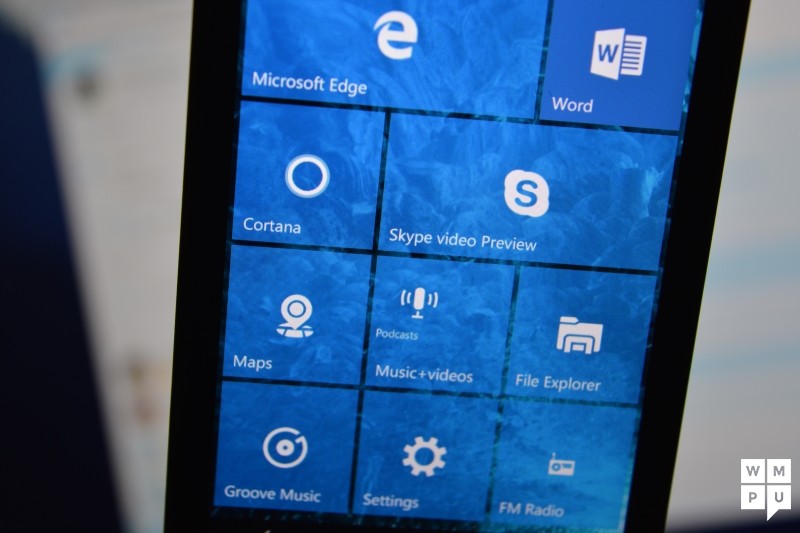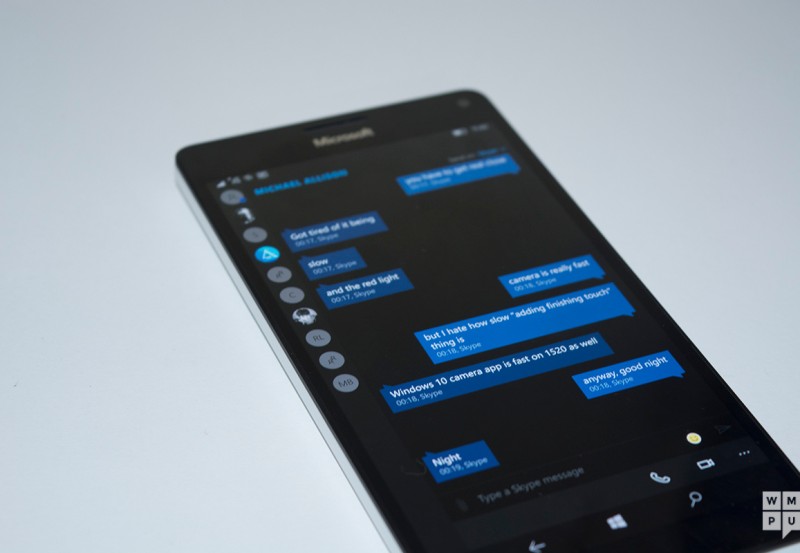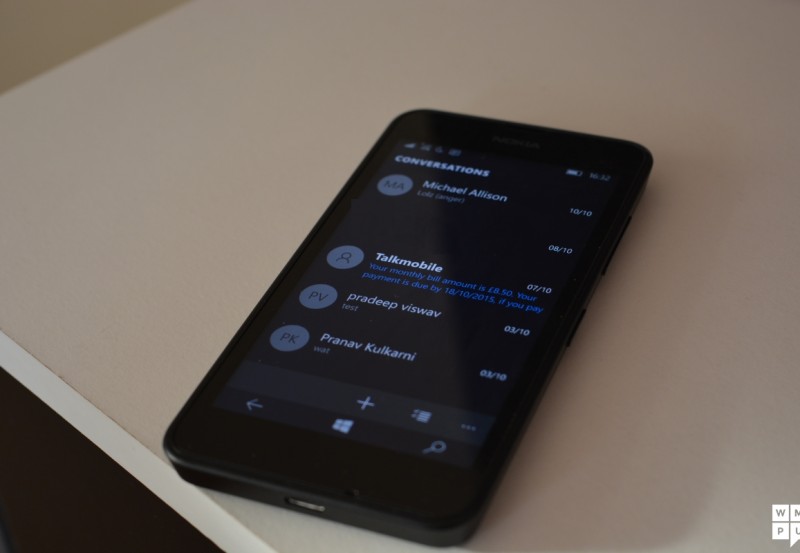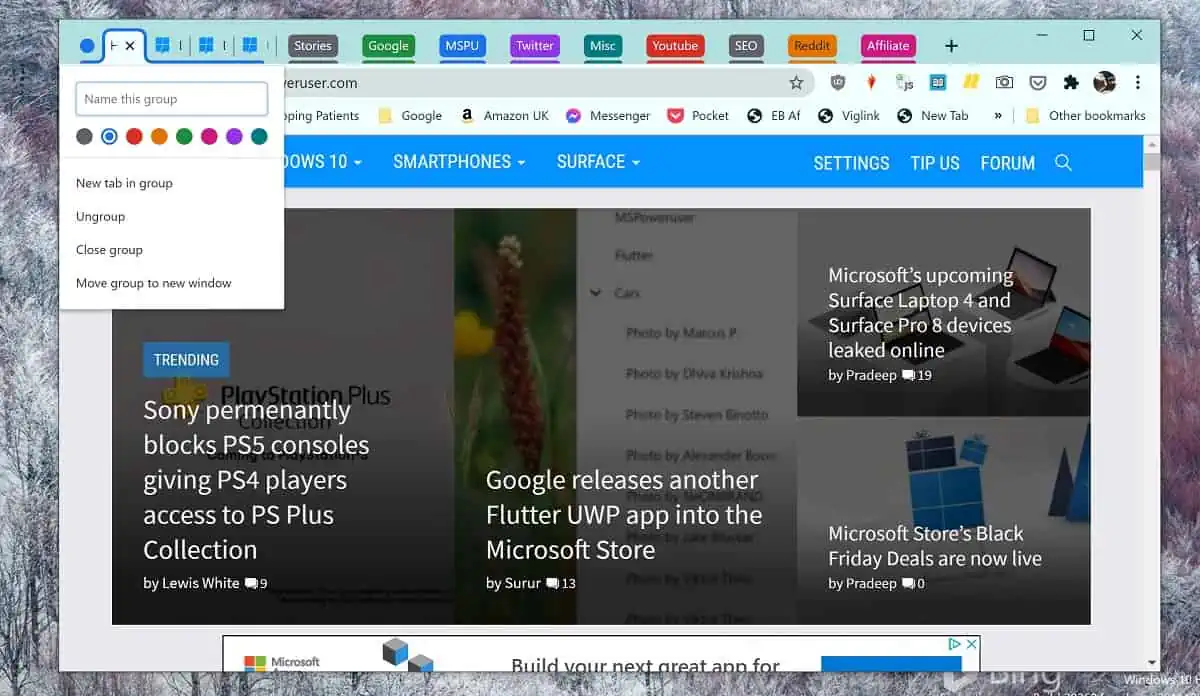The problem with Messaging Everywhere's future is that Skype sucks
7 min. read
Published on
Read our disclosure page to find out how can you help MSPoweruser sustain the editorial team Read more

Earlier this week, during Microsoft’s announcement of the latest Insider fast ring build, the firm dropped a bombshell on Windows Insiders – the message wrote and I quote:
We have been testing with Windows Insiders a preview of the “Messaging everywhere” feature that allows you to receive and send text messages from your Windows 10 phone directly to and from your Windows 10 PC. The experience was well-received by Insiders however we believe we can deliver an even better experience through the Skype app. Because of this, we decided not to release this feature as part of the Windows 10 Anniversary Update this summer. Starting with Build 14376 and going forward, Insiders will no longer have the ability to reply to text messages from their phone via the Messaging app on their PCs. The ability to reply to text messages on your PC using Cortana is unaffected. Going forward, we will be working with the Skype Team on delivering a great “messaging everywhere” experience on your Windows 10 devices through the Skype app
To summarise, Microsoft believes that they can build a better SMS client in Skype, than as a standalone app itself. I presume this is borne out of desire to not only push Skype, but to copy the iMessage system pushed by Apple whereby SMS is subsumed by the proprietary messaging app built into the OS itself. It’s a feature demanded by Windows Phone users, and I did believe that it would be a good thing in the past, but no longer think so for reasons I will give below.
Let’s get one thing straight right at the offset, I have zero faith in the Skype team, I have zero faith in the Skype team’s ability to create a compelling app experience, and I have zero faith in the Skype team’s ability to actually follow through with Microsoft’s Messaging Everywhere feature.
First of all, let’s start with the small potatoes, the “why” of it all. According to the Microsoft blog post which announced this change, Microsoft believes that even though the experience was “well received” by Insiders, Skype can do a better job in future. The issue with this is that the job belonged to the Skype team to begin with. The team have been in charge of creating an integrated SMS and Skype IM experience since 2015 – and they failed wonderfully and publicly. Their strategy then was simple, using the SMS app as a base, build up a powerful integrated Skype experience to rival iMessage. However, their execution was lacking.
The Messaging + Skype app as it shipped did not have the full gamut of Skype features. It was limited perhaps by design, perhaps by inability. It didn’t match the experience provided on iOS and Android mobile apps, and it certainly didn’t match the experience of the Windows Desktop app. Instead of doubling down on this and adding more and more features to the app, the Skype team decided to pull Skype out of the messaging app and build a fully featured Skype experience.
In the meantime, the Windows team created an SMS client for Windows 10 PCs. This client would sync SMSes between Windows 10 Mobile devices and Windows 10 PCs so that users could send and receive SMS on their PCs. Here’s the rub: it worked, and it worked near flawlessly in my experience. Actionable notifications were present, you could reply from the comfort of your desktop PCs, you could even hook up multiple lines and text using those.
On the Skype side of things, the Skype team had failed to provide a viable universal Skype client for desktops and mobile devices. The mobile app that Microsoft promised would be here in June? Nowhere to be seen in July. So, from the outside looking in, we have two apps – one works and is just about done, the other is a mess and has been for years. If anything was to be killed, one would assume it would be the Skype brand and its family of ill designed apps in favour of the modern Microsoft messaging app.
Secondly, tying Messaging Everywhere into Skype overlooks one small thing – Skype isn’t suited for what Microsoft appears to be positioning it as. From its plans stated at the Windows 10 announcement in January, we can extrapolate that Skype is being moved from a primary video chat client to an all in one mobile messaging client like Viber, Facebook Messenger or WhatsApp.
What this means is that Microsoft likely intends to have Skype as the primary SMS app on Windows 10 Mobile, with the SMS capabilities taking a backseat to Skype’s own highlight features like mojis, bots, Cortana integration etc.
For Microsoft to achieve this with Skype, they’re going to need to reduce friction with the login and messaging process. For instance, with WhatsApp and Line, all you need to reach out to someone is to have their phone number or linked account details in your people app. If Skype is intending to replace WhatsApp or Line, then it would need to reduce the friction in finding and messaging users.
While one can point to Facebook Messenger as an app that requires an “invite” based system similar to Skype, Facebook has long since expanded its messaging platform to allow users to make use of messaging without having a Facebook account, and Facebook has the luxury of having a social network behind it and being entrenched near everywhere. Skype doesn’t have that luxury, and Microsoft needs to make some serious changes to the way the platform works.
Finally, I no longer agree that mixing SMS and IM is a good idea. For one, SMS is a basic ubiquitious protocol, it is very much useful as a fallback when no data is available, but not so much that they should be integrated into one app. Think about iMessage, whose users complained about messages failing to send upon a switch to Android or Windows phone. SMS is like coffee, Skype is like orange juice, they have similar uses, but mixing them makes a very neutered experience.
When using Android, I’ve used a variety of SMS apps purely for the novelty of it, and one thing they have over Windows and iMessage is that due to them bein pure SMS apps, they can focus on the experience of pure SMS for people who use SMS. If the Skype team is in charge of SMS the same way the iMessage team is in charge of SMS, then it is a guarantee that the SMS experience will be inferior to that offered by a pure SMS app.
Overall, Messaging Everywhere as implemented before was an app that would not have brooked much complaint. It was a simple SMS client which did what it said on the tin – sent and received SMS. Skype on the other hand, has a long history of NOT doing what it should, a convoluted account system which sets it apart from other modern messaging apps like Facebook Messenger, WhatsApp and Viber, and a design that desperately needs to be modernized. I would love to sit here, and give the Skype team the benefit of the doubt this time, but its the Skype team, they’re skilled at pulling defeat from the jaws of victory.












User forum
83 messages